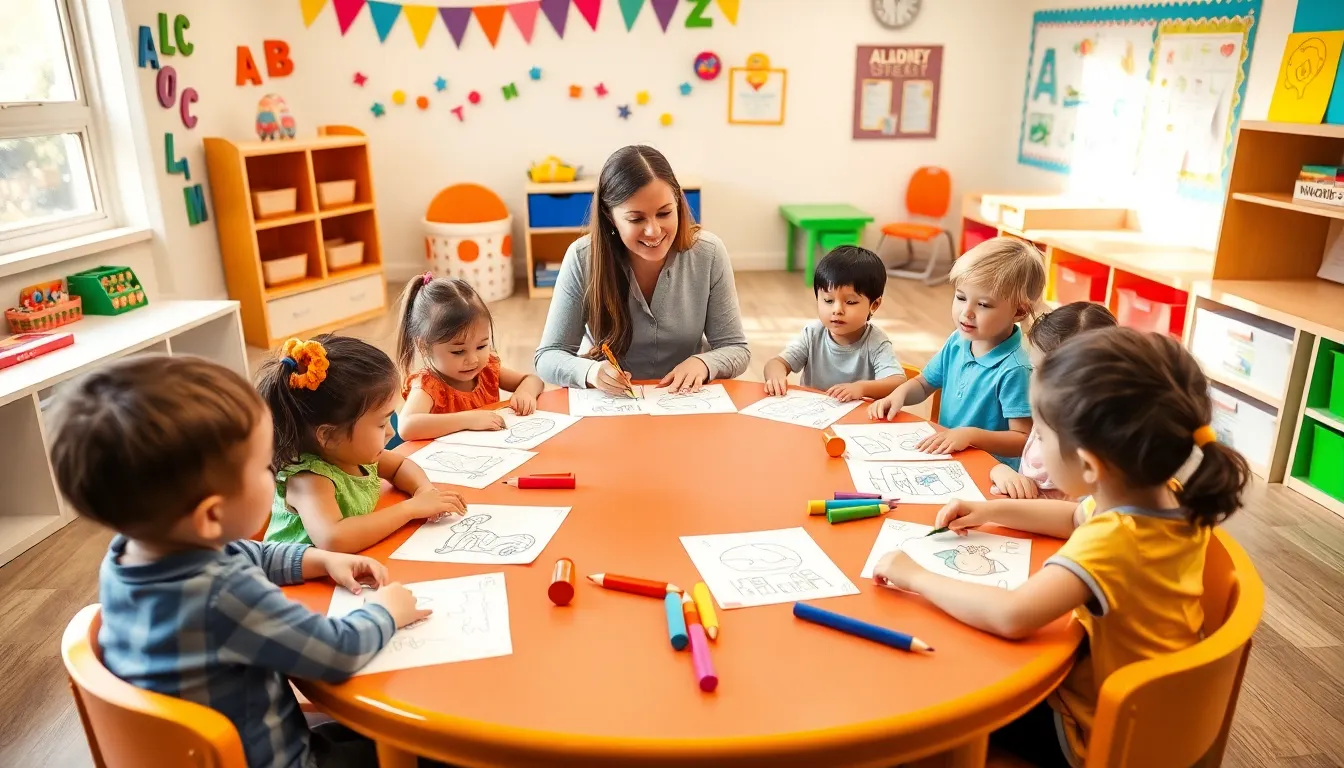Table of Contents
ToggleEver wonder what goes on in the mind of a preschooler? Their thoughts can be a delightful mix of innocence and curiosity. Enter the “All About Me Worksheet”, a magical gateway that invites kids to explore who they are. Think of it as a playful passport to their thoughts, feelings, and personal quirks. By using this engaging tool, children can share their world with their peers in a fun, creative way. Ready to dive deep and find out how this simple worksheet can transform little lives? Let’s get started.
Purpose of the All About Me Worksheet

The “All About Me Worksheet” serves a multitude of purposes, making it an invaluable resource for both educators and parents. Its primary goal is to assist children in expressing their identities while interacting with their peers.
Benefits for Children
Of course, one of the most notable advantages of this worksheet is its ability to boost a child’s self-esteem. When preschoolers reflect on their unique attributes and experiences, they begin to develop a positive self-image. This foundational confidence is crucial as they venture into the wider world.
Encouraging Self-Expression
Also, this worksheet encourages self-expression. By answering questions about themselves, children learn to articulate their thoughts. Whether it is their favorite toys, dreams, or even what makes them giggle, these insights allow them to express themselves verbally, fostering language skills.
Promoting Social Skills
Finally, completing the worksheet helps to promote social skills. As children share their findings with others, they learn the value of listening and asking questions. This peer interaction provides them with essential tools for communicating and interacting effectively.
Components of the All About Me Worksheet
Creating an effective “All About Me Worksheet” involves several engaging components, each designed to draw out the personality of each child.
Basic Information Section
First, the basic information section is intended to capture fundamental details like name, age, and birthday. These elements establish a personal touch right from the start.
Family and Friends Section
Next, the family and friends section lets kids introduce their social world. It’s a fun way for them to talk about who is important in their lives and to start building relationships in the classroom.
Favorites and Hobbies Section
Then, the favorites and hobbies section opens the door to their preferences. Whether it’s dinosaurs, scary stories, or art projects, this area shines a light on what makes each child unique.
Creative Expression Section
Finally, the creative expression section invites them to think outside the box. Here, children can illustrate, color, or even collage their favorite items. This not only nurtures creativity but also lets their imaginations run wild.
How to Use the Worksheet in the Classroom
Using the “All About Me Worksheet” effectively in the classroom can promise loads of fun while encouraging learning.
Individual Activities
Start with individual activities. Each child takes their time filling out the worksheet, allowing them to explore personal interests. This quiet time provides a moment for reflection and self-discovery.
Group Discussions
Afterward, transition to group discussions. Set aside some time for each child to present their worksheet to classmates. The sharing not only builds communication skills but fosters a sense of community in the classroom.
Display and Share
Finally, consider displaying the worksheets on a class bulletin board. This showcase is not just a decorative touch: it instills pride among students. Seeing their work being celebrated boosts confidence and inspires others in the class.
Tips for Educators and Parents
To maximize the effectiveness of the “All About Me Worksheet,” here are a few tips for educators and parents.
Encouraging Participation
Primarily, encourage participation by creating a relaxed atmosphere. Use prompts or examples to spark interest. The more comfortable kids feel, the more they will open up.
Adapting for Different Age Groups
Also, adapt the worksheet for different age groups. Younger kids may need simpler questions and more space for drawings, while older preschoolers may enjoy having slightly more complex queries to ponder over.
Integrating with Other Lessons
Finally, integrate the worksheet with other lessons. Use it along with topics like family, friendship, or even cultural heritage. Such integration deepens the learning experience while keeping it relevant and enjoyable.




